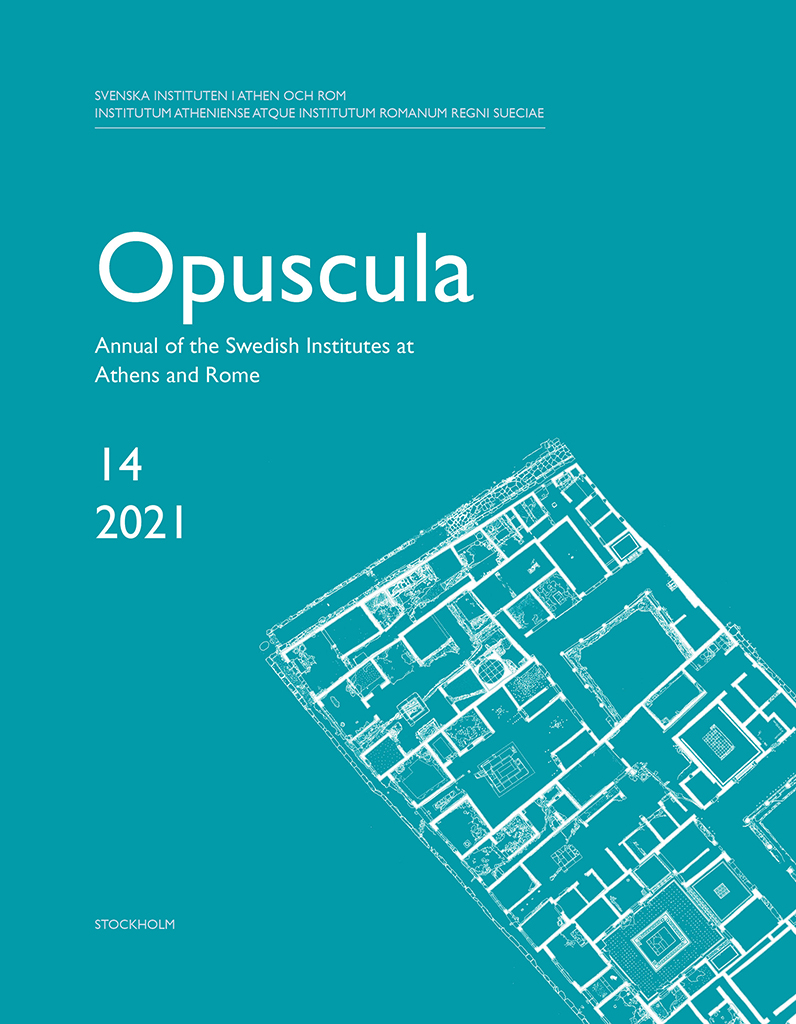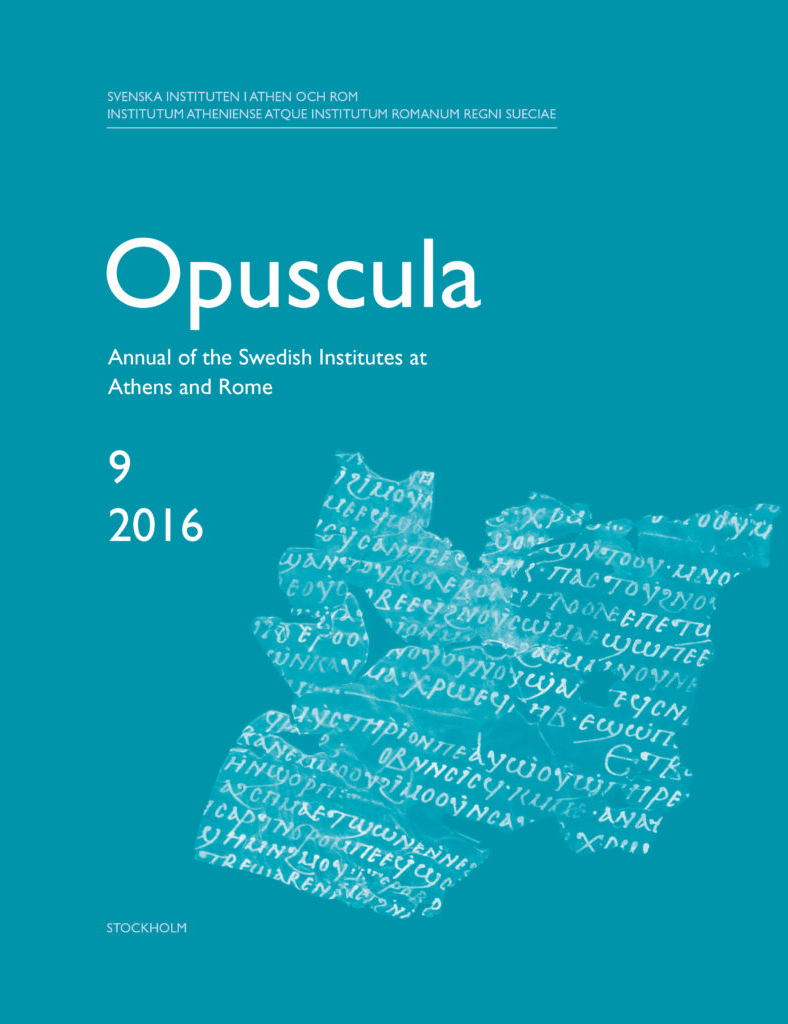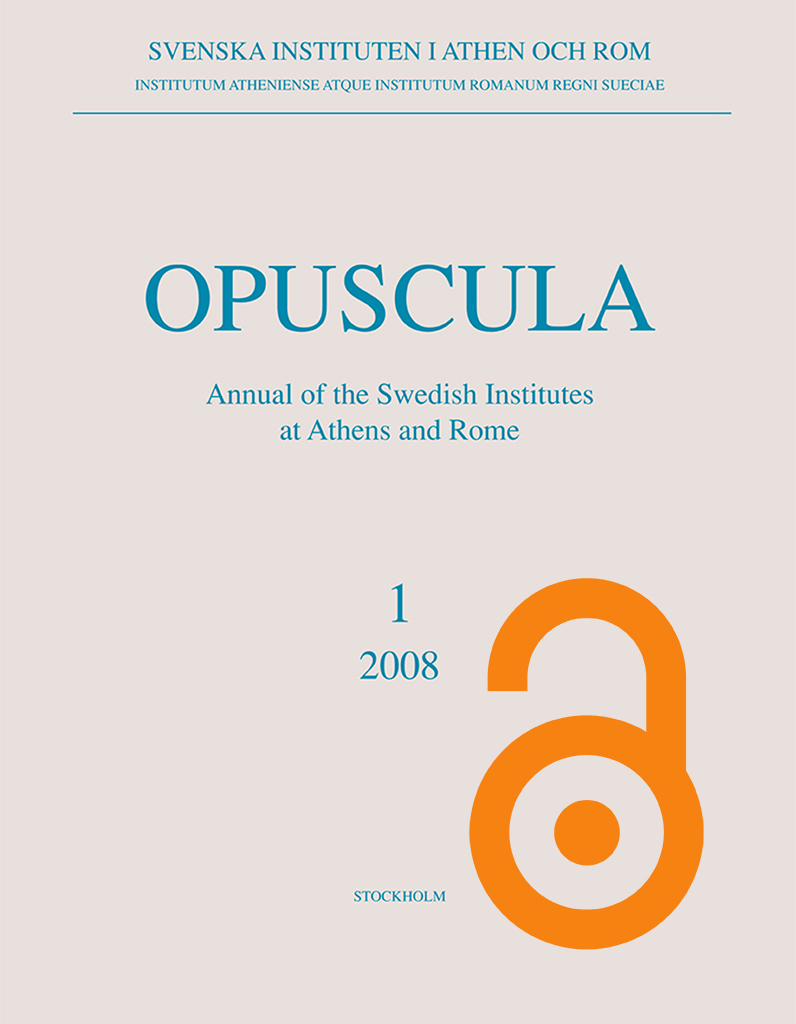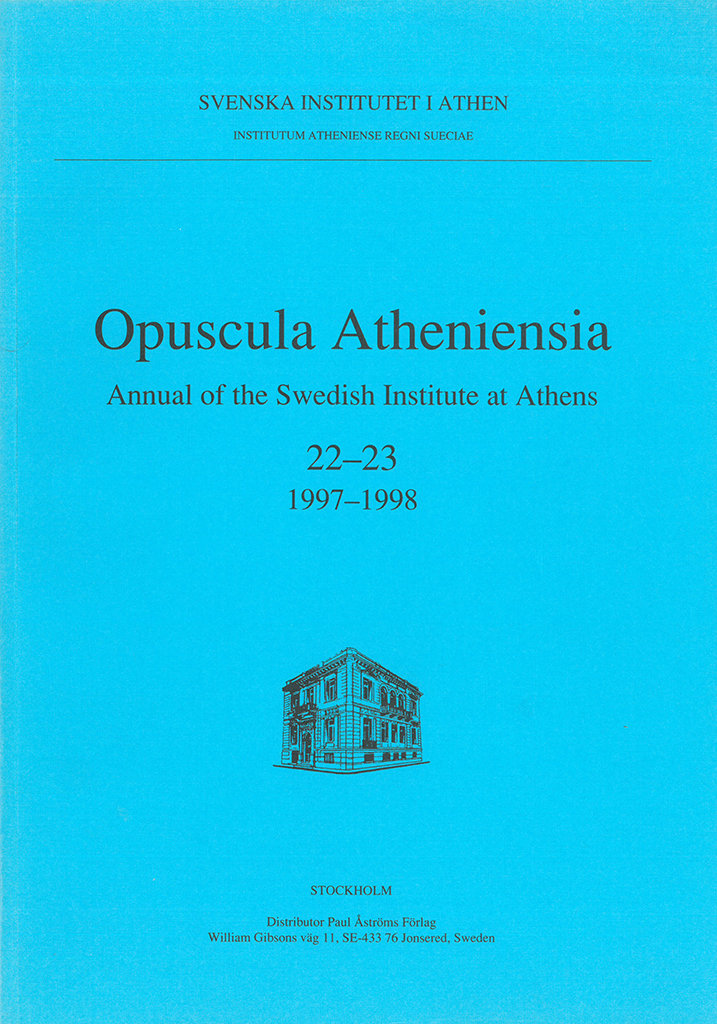Opuscula is published by the Swedish Institutes at Athens and Rome, with the aid of a grant from the Swedish Research Council. Distributed by Eddy.se AB. View journal at ERIH PLUS. All content available with open access. The Basilica Sempronia and the Forum Romanum By Henrik Gerding & Nicolò Dell’Unto Abstract The authors of this paper reinvestigate the remains of the Basilica Sempronia, situated below the Imperial Basilica Julia in Rome. By combining the information from the original excavation with a new 3D digital documentation, new observations are made and previous interpretations reassessed. The present remains are discussed in relation to the contemporary built environment, as well as to preceding and following phases. It is argued that the Basilica Sempronia was an elongated hall with closed lateral walls and interior supports. It was erected on a podium that raised the building above the surrounding streets on all sides except the west. The Augustan renewal of the Basilica Julia entailed vast foundations works, which had a huge impact on the site. However, evidence of an intermediate phase indicates the existence of a building complex that merged the previous basilica with the Tabernae Veteres, partly preserving their original dimensions and orientations. This…
Opuscula is published by the Swedish Institutes at Athens and Rome, with the aid of a grant from the Swedish Research Council. Distributed by Eddy.se AB. View journal at ERIH PLUS. All content available with open access. The topography of Hermione—A preliminary outline By Henrik Gerding (Lund University, Sweden) Abstract The preliminary results of a survey of ancient Hermione (epichoric Hermion) are presented in this paper. The survey was conducted during three short campaigns over the period 2015–2017, and focused on the urban layout and development of the ancient city. Because the ancient city area more or less coincides with modern Ermioni, the investigation was mainly restricted to the documentation and analysis of architectural remains that were both still visible above ground and accessible. However, the report also includes a thorough re-evaluation of previous scholarship, taking into consideration remains that are no longer visible. The author identifies three questions of particular interest, relating to the exact location, extent, and potential relocation of the ancient city, and points to the lack of a coherent interpretation. On the basis of present data, the author proposes that Hermione was indeed relocated to a new site, less than 1 km away from its original…
Opuscula is published by the Swedish Institutes at Athens and Rome, with the aid of a grant from the Swedish Research Council. Distributed by Eddy.se AB. View journal at ERIH PLUS. All content available with open access. Later, laterculus, and testa. New perspectives on Latin brick terminology By Henrik Gerding Abstract For centuries antiquarians and archaeologists have tried to reconcile the terminology of ancient writers on architecture, such as Vitruvius, with the perceived realities of the material record. One particular issue of debate concerns the interpretation of different words for “brick” in Latin. In this paper it is argued that earlier attempts to settle this question are unsatisfactory and leave several problems unresolved. A thorough examination of literary and epigraphic sources, combined with new insights in Hellenistic brick usage, suggests that primary distinctions in Latin brick terminology were based on shape and size, rather than on a mere division between fired and unfired bricks. Thus, it is argued that later basically signified a large moulded block, but normally was used to indicate mud bricks; that laterculus changed over time from being a diminutive (a small later) to becoming the standard term for the relatively thin fired bricks of the Roman…
Opuscula is published by the Swedish Institutes at Athens and Rome, with the aid of a grant from the Swedish Research Council. Distributed by Eddy.se AB. View journal at ERIH PLUS. All content available with open access. A courtyard gate at Thourioi By Henrik Gerding Abstract In the early seventies Paola Zancani Montuoro suggested that a large paved structure, which had recently been uncovered at the site of Sybaris/Thourioi in southern Italy, was the remains of an ancient neosoikos, or shipshed. This idea quickly gained widespread acceptance and is still often repeated, despite some objections having been raised. In this paper it is argued that the structure, which cannot have been a shipshed, was actually a courtyard gate belonging to the Late Classical or Early Hellenistic city wall of Thourioi. Bibliographical information Henrik Gerding, ‘A courtyard gate at Thourioi’, Opuscula. Annual of the Swedish Institutes at Athens and Rome (OpAthRom) 4, 7–18. Stockholm 2011. ISSN: 2000-0898 ISBN: 978-91-977798-3-8. Softcover, 168 pages. https://doi.org/10.30549/opathrom-04-02
Opuscula is published by the Swedish Institutes at Athens and Rome, with the aid of a grant from the Swedish Research Council. Distributed by Eddy.se AB. View journal at ERIH PLUS. Content available with open access. Opuscula. Annual of the Swedish Institutes at Athens and Rome 1, 2008 Contents ‘Front matter‘, 1–6 Katie Demakopoulou, Nicoletta Divari-Valakou, Monica Nilsson, Ann-Louise Schallin, with an appendix by Kalliopi Nikita, ‘Excavations in Midea 2006’, 7–30 https://doi.org/10.30549/opathrom-01-02 John K. Papadopoulos, ‘The Archaic wall of Athens. Reality or myth?’, 31–46 https://doi.org/10.30549/opathrom-01-03 Anton Bonnier, ‘Epineia kai limenes. The relationship between harbours and cities in ancient Greek texts’, 47–61 https://doi.org/10.30549/opathrom-01-04 Fabrizio Vistoli, ‘Una nuova acquisizione di ceramica “white-on red” dall’ager Veientanus’, 63–77 https://doi.org/10.30549/opathrom-01-05 Ola Wikander, ‘The religio-social message of the gold tablets of Pyrgi’, 79–84 https://doi.org/10.30549/opathrom-01-06 This contribution is only available in print. Milette Gaifmann, ‘Visualized rituals and dedicatory inscriptions on votive offerings to the Nymphs’, 85–103 https://doi.org/10.30549/opathrom-01-07 Gabriella Barbieri, ‘Materiali inediti da Sovana. Alcuni corredi funerari dalla necropoli di San Sebastiano’, 105–122 https://doi.org/10.30549/opathrom-01-08 This contribution is only available in print. Maria Gabriella Scapaticci, ‘Nuovi dati sul popolamento nella pianura di Tarquinia durante la romanizzazione. Il caso della località “Il Giglio”‘, 123–135 https://doi.org/10.30549/opathrom-01-09 Paavo Roos, ‘A forgotten tomb…
Published by the Swedish Institute at Athens. Distributed by Astrom Editions. Opuscula Atheniensia. Annual of the Swedish Institute at Athens 22–23, 1997–1998 Contents Marie-Françoise Billot, ‘Sanctuaire et cultes d’Athéna à Argos’, pp. 7–52 Hélène Borrman, Mascot Fjaestad-Seger, E. Urban Engström & Paul Åström, ‘A dental radiographic examination of a Late Bronze Age skull from Kition’, pp. 53–56 Katie Demakopoulou, Nicoletta Divari-Valakou, Paul Åström & Gisela Walberg, ‘Excavations in Midea 1995–1996’, pp. 57–90 Johan Flemberg, ‘An Anadyomene in the Milles Collection’, pp. 91–101 Barbro Santillo Frizell, ‘Monumental building at Mycenae. Its function and audience’, pp. 103–116 Jane F. Lloyd, ‘The Minoan hall system and the problem of an entrance to the South House at Knossos’, pp. 117–140 G.H.R. Wright, ‘Puer aeternus in prehistoric Cyprus’, pp. 141–146 Miscellanea Göran Henriksson & Mary Blomberg, ‘Petsophas and the summer solstice’, pp. 147–151 Penelope A. Mountjoy, ‘An octopus stirrup jar from Kalymnos’, pp. 152–154 In memoriam Alfred Westholm (written by Paul Åström) (p. 155) Erik Holmberg (written by Paul Åström) (p. 156) Book reviews Henrik Gerding, ‘P. James et al., Centuries of darkness. A challenge to the conventional chronology of Old World archaeology‘, pp. 157–160 Gunnel Ekroth, ‘C.M. Antonaccio, An archaeology of ancestors. Tomb cult…






